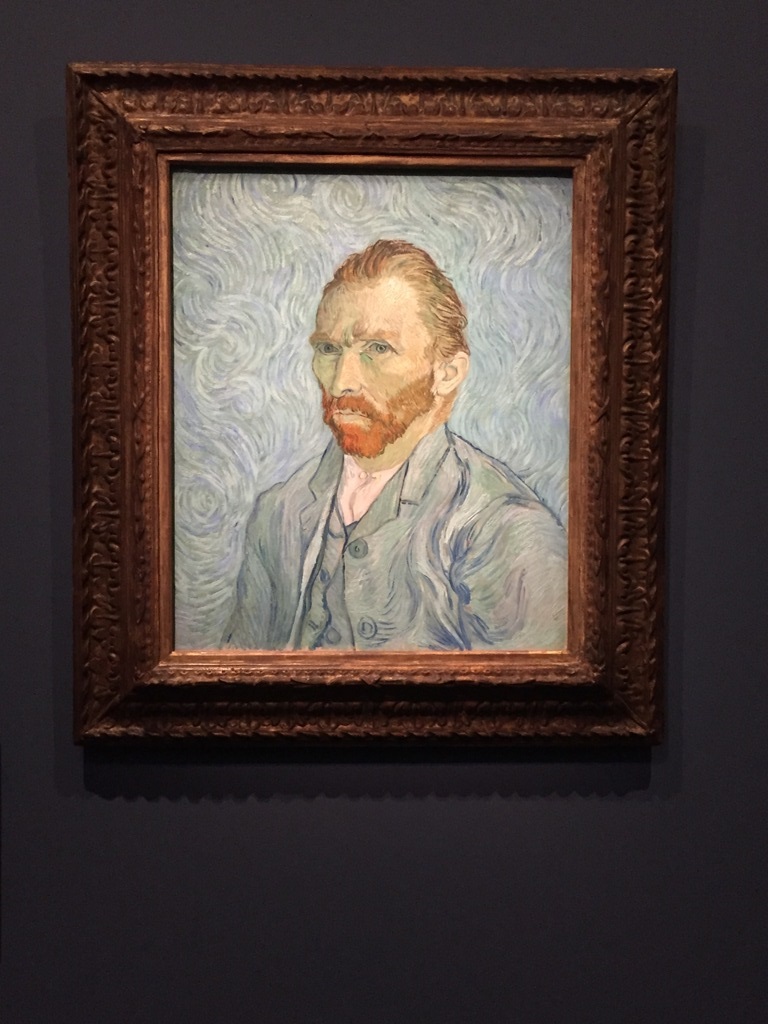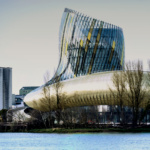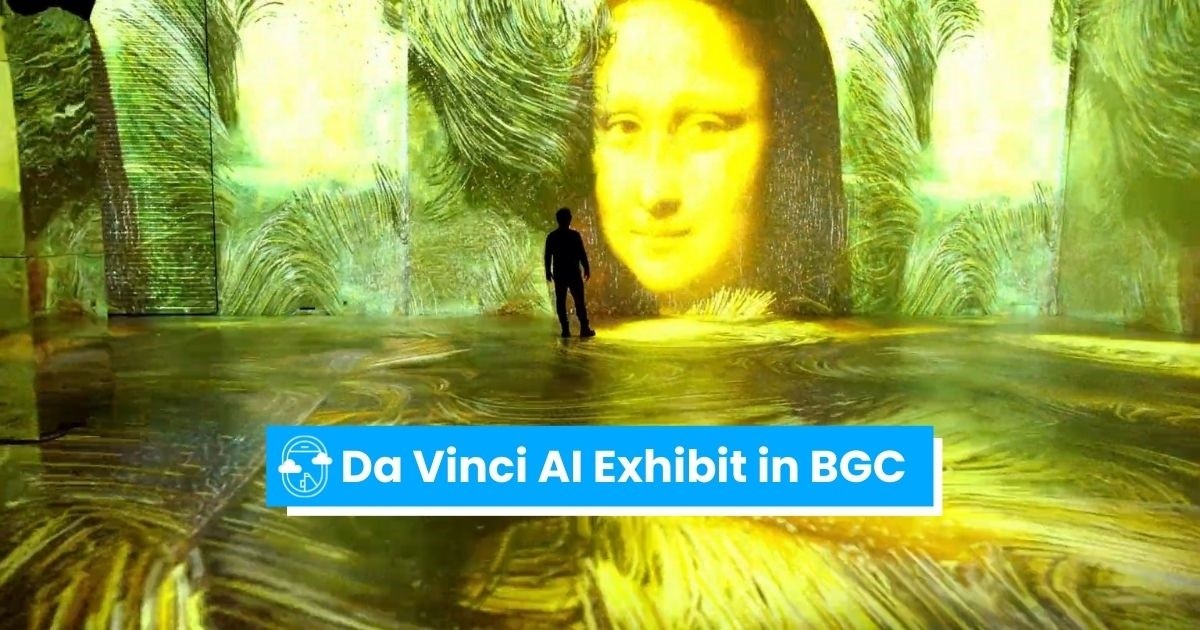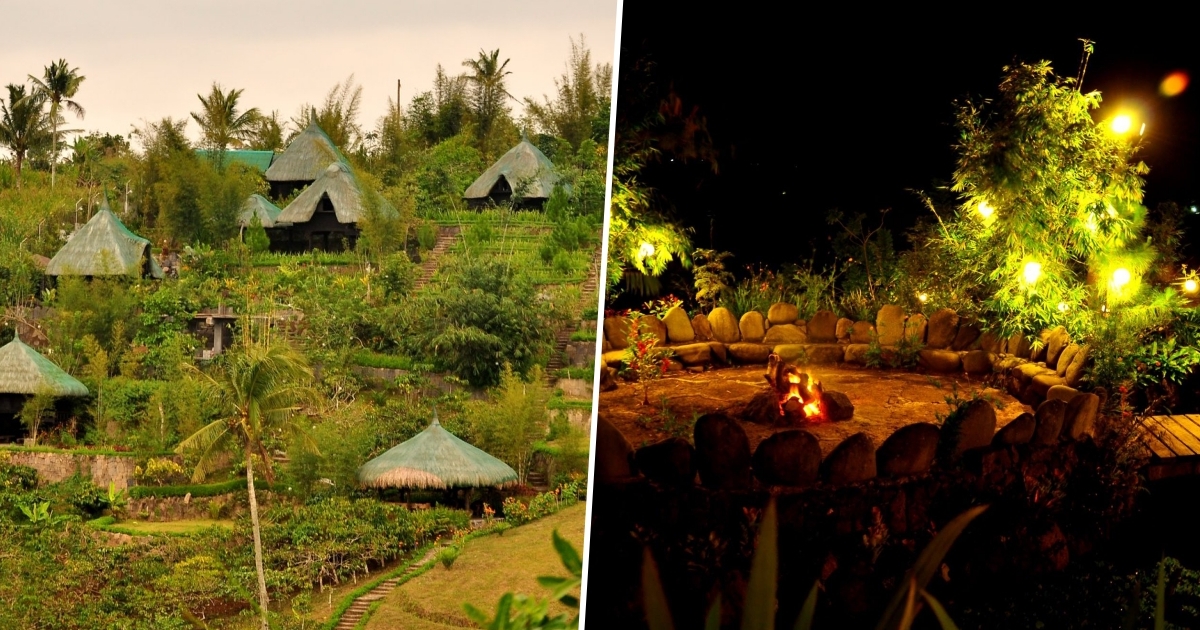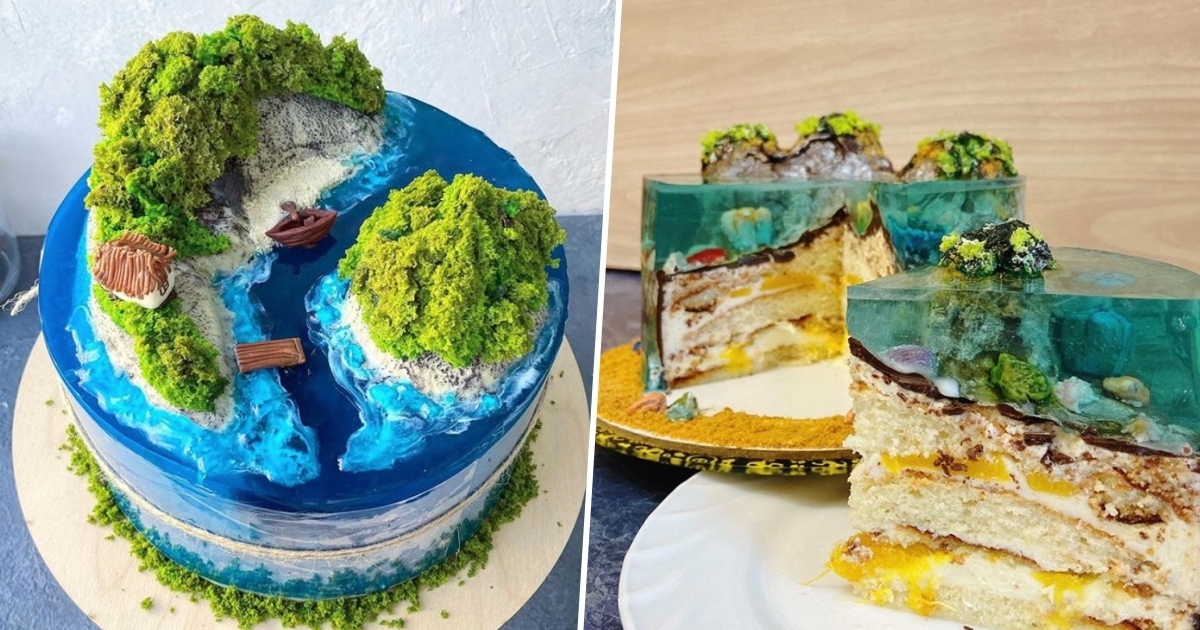Eye to Eye with Van Gogh: My Art Tour in Paris
Art is everywhere in the City of Lights.
by Ginny Guanco | September 20, 2016
If there’s any place on this earth where one can call an artist’s haven, it would be Paris. I was fortunate to have made the trip to two parts of Europe, recently, and I must say that this perception proved to be true.
The moment I reached the City of Lights via Eurorail from Monaco, I could instantly feel the art culture of the past kept through centuries, beckoning me to explore more of its rich history. I could see the way the old buildings and structures, built and rebuilt in Gothic Style or French Renaissance, were carefully preserved.
Art seemed to be everywhere as I saw artists seriously engaged in their craft along the city sidewalks. Even the Hotel where I stayed was not spared from a 1920 ambience. All around me were touches of Art Nouveau – from the furniture and furnishings, paintings on the wall to the old elevator that appeared straight out of the 19th century.

Gare De Lyon Train Station

Street artists lined up the sidewalks

Old 19th century elevator in my hotel


Traces of Art Nouveau in the hotel’s interior.
I read somewhere that there are more than a hundred museums in the city of Paris alone. I know this would take a lifetime to check out each one! Smithsonian.com, an authority on Arts and Culture, lists down five must-see museums in Paris: the Louvre, Musee d’ Orsay, Musee de l’Orangerie, Musee Rodin and Centre Georges Pompidou.
Of the five, I was able visit the top two.
Fulfilling a dream
Day two was the start of my art tour. It was a pre-arranged “skip the line” paid guided tour with an English speaking guide who had stories to tell behind many of the paintings.
That morning, I took a Metro train from my hotel to where Musee d’ Orsay was, on the left bank of the Seine, which was just a 20-minute ride. There was no way anyone could overlook the big bronze elephant statue, which my travel agent back home said was to be the pick-up point where the guide would meet us. It was a give away landmark.

The bronze elephant statue in front of the façade of Musee d’ Orsay
Once inside this former railway station called Gare d’ Orsay, which was converted into a museum between 1898-1900, housing a collection of artworks produced between 1848 and 1914, consisting of the largest collection of impressionist and post-impressionist art in the world, we knew we would be treated to the actual works of Degas, Cezanne, Gauguin, Manet, Monet, Renoir and Van Gogh, among others.

Musee d’ Orsay, a former railway station
A mini Lady Liberty statue welcomed us near the entrance. And the Big Clock of the old railway station, which seemed to loom larger than life, “greeted” us.

Lady Liberty statue near the entrance

The original old clock of the railway station
We were soon ushered and “transported back” to the mid-19th century where a series of rooms filled with sculptures and paintings, decorative arts, photography and drawings were displayed. The subjects ranged from landscape sceneries, peasants working in the field, religious art, portraits, and beautiful still life objects.
Each time we looked up at the ceiling, which was an art piece in itself, we could see the intricate and detailed workmanship.
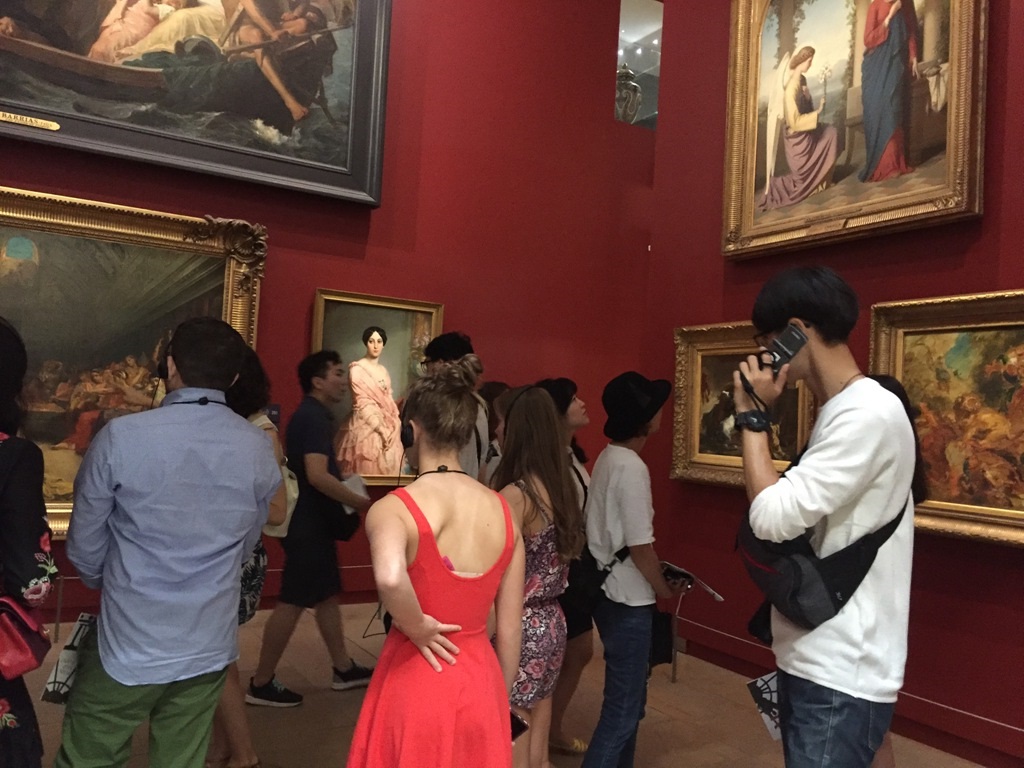


I must admit that my favorite wing is up on the 5th floor which was devoted to Impressionism. The guide led us to the famous wax statue of a 14-year-old dancer sculpted by Edgar Degas, plus many of his ballerina paintings. Figurative works of Manet and Cezanne also stood out amid the many masterpieces.


Little 14-year-old Dancer statue and ballerina paintings by Edgar Degas

By Manet

By Cezanne
Down the escalator to the 2nd floor, one would find the famous paintings of Vincent Van Gogh, among which were; “The Starry Night”, “Bedroom in Aries” and his “Self-Portrait.”

The Starry Night by Van Gogh
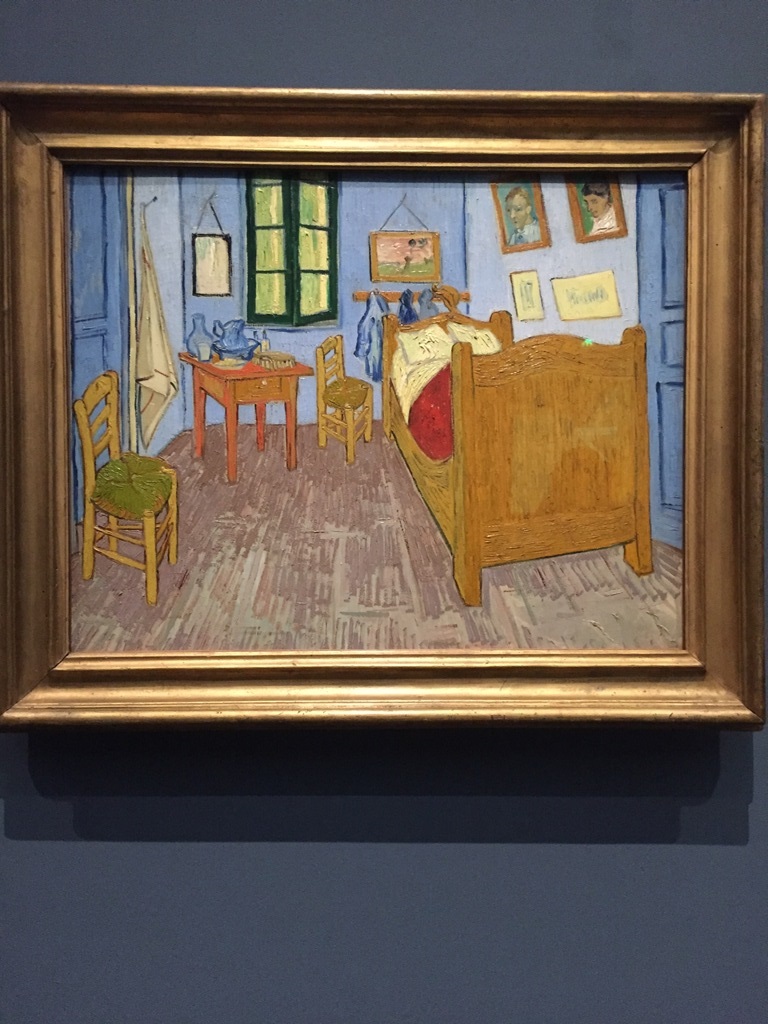
Bedroom in Aries by Van Gogh

Self-Portrait
Although the guided tour was only two and a half hours, we were free to stay longer to roam around the other sections not covered in the tour. Of course I took advantage of this. It was an opportunity of a lifetime.
Day three was the very reason of my visit to Paris. It was to actually fulfill a dream, a part of my bucket list to personally step inside the Louvre Museum. This time, the famous art edifice was not just going to be a novel written on paper, nor was it going to be images on the big screen where “The Da Vinci Code” was filmed in 2006. I was going to have an eye-to-eye encounter with the real thing.
Because of my excitement, I was 30 minutes ahead of time at the designated spot outside the Paris Vision Agency, where the guide was suppose to meet our small group. When he arrived, he gathered the group, gave us a quick briefing, then he led us to the much anticipated structure, which was just a short walk.
When I saw THE pyramid, I knew that I was where I‘d wanted to be.

The famous Pyramid of the Louvre Museum
Our guide did not hesitate to bring us to the two most talked about pieces of sculpture which are the “Venus Di Milo”, or the Greek goddess Aphrodite, and “The Winged Victory” of Samothrace, a marble Hellenistic work of the Greek goddess, Nike.

Venus De Milo
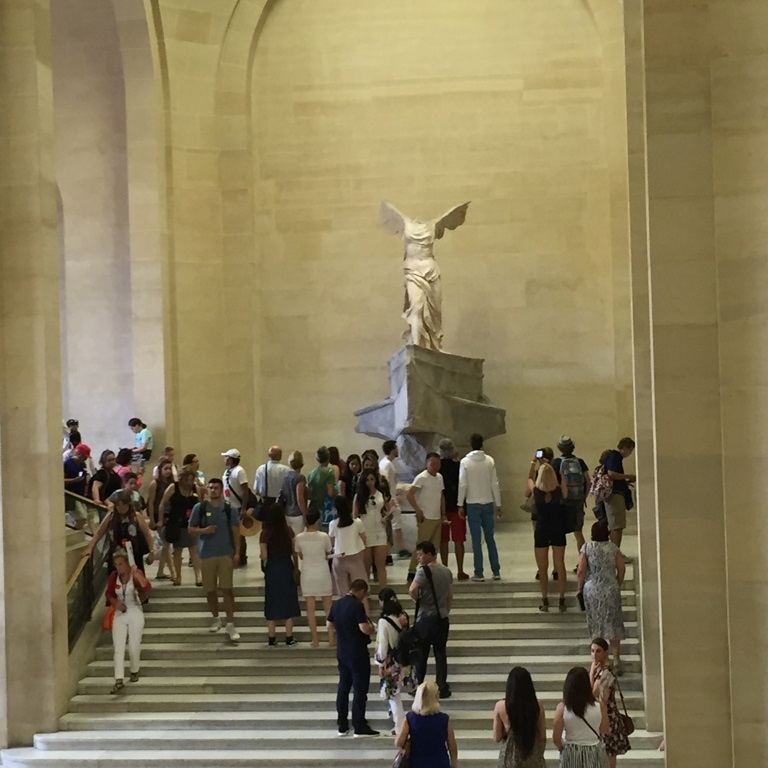
Winged Victory
I was particularly enthralled by the huge oil murals of “Napoleon’s Coronation” by Jacques-Louis David (20 ft.4 in. x 32 ft. 1 in), and “The Wedding at Cana”, a representational painting depicting the bible story of the marriage banquet, by Paolo Veronese.

The Coronation of Napoleon

The Wedding at Cana
And of course the highlight of the tour was the all-inclusive Mona Lisa of Leonardo Da Vinci in the Devon Wing. Shielded in a bullet-proof glass case, with a cordoned railing, the small but nonetheless giant wonder of a painting stared at us in all her glory. But I was within visual distance, just a couple of feet away. Beside the whole area were museum personnel standing by. Mona Lisa’s enigmatic smile has been the subject of many theories and schools of thought. For me, the issue is not trying to unravel the mystery but to just leave that element there and enjoy the painting for what it is.


The one and only Mona Lisa
In another section of the Louvre was the Napoleon III Apartments. Here, one is given a taste of what it was like living in opulence. The over-the-top grandeur of the rooms, gilded from top to bottom, are so richly appointed, that it was hard to fathom that mortals would occupy such ornate spaces. The chandeliers, decorative ornaments, meticulously designed art pieces, rich colors of deep green, bright pink crimson and gold adorn the walls and other furniture. You almost could not imagine sitting on those chairs.



The opulence that was in the Napoleon III Apartments
In the Richelieu Wing, one would find a glass-roofed courtyard known as Cour Marly, where most of the sculptures came from Louis XIV. It is also the best pit stop after walking for several hours and you just want to rest your feet for a while. The enormous space offers one a meditative atmosphere, almost like a sanctuary of quiet solitude. The fresh air, the airy and cool feeling you get, the peace and tranquility of your surroundings are enough reasons to make all your senses aware that you have just come out of a dream.
A dream that turned into a reality. And you can’t help but be thankful.


All photos by Ginny Guanco.
Do you have your own favorite art locations or pieces in Paris? Do let us know in the comments!



